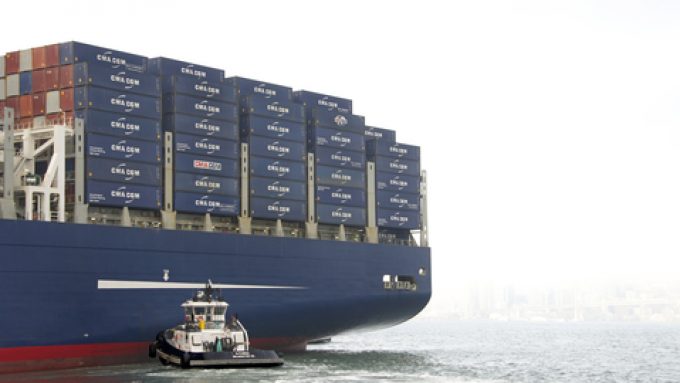DSV chief reticent on Schenker: the focus on growing market share
DSV focused on gains in market share, organic growth and making investors confident in its ...

French transport and logistics group CMA CGM plunged into the red in the final three months of 2023, despite increasing its shipping volume, as freight rates on liner services tumbled.
Group chairman and CEO Rodolphe Saadé said conditions in shipping markets had “deteriorated progressively during the year”, and “Our results are down, as we expected.”
CMA CGM’s net income for Q4 contracted to a loss of $90m, compared with a net profit of $3bn the year before – however, for the full-year, the group still managed to produce a net profit, of $3.64bn, versus $24.9bn in 2022.
In Q4, the company’s liner unit recorded a 6.8% increase in the number of containers it transported across its network, compared with the same period of the previous year, to 5.5m teu, but revenue slumped 47%, to $6.6bn, bringing the average rate per teu down to $1,200.
Vespucci Maritime’s Lars Jensen noted that CMA CGM’s revenue decline was on a par with the global market average data for the period, compiled by Container Trades Statistics.
CMA CGM explained that a “supply-demand mismatch” had “weighed on freight rates”.
It explained: “The second half saw a rebound in demand, which increased volumes 3.8% over the period. Nevertheless, freight rates remained under pressure due to an influx of new shipping capacity, which maintained the imbalance between supply and demand.
“In comparison with 2022, 2023 volumes carried by the group on north-south routes, (up 4.2%) and intra-regional lines (up 3.3%), proved more resilient than on east-west routes (down 2.7%), thanks in particular to the sustained robust growth of certain emerging economies.”
Over the full year, CMA CGM’s shipping volumes were virtually flat, at 21.74m teu, while revenue stood at $59bn, for an average of $2,714 per teu, and an ebitda of $7.4bn, which was 77% lower than in 2022.
In terms of the outlook, CMA CGM said, 2024 was “likely to be shaped by sluggish global economic growth, although global trade for goods is expected to rebound from 2023 lows, driven by consumer spending and replenishing inventories”.
“Volume growth should remain strong in the first half, supported by these base-line effects, but the second half looks more uncertain,” it added.
Like its peers, the carrier stands to benefit from the Red Sea crisis and was one of the first container lines to declare force majeure, enabling it to charge additional freight during the disruption.
Nonetheless, despite issuing a notice to shippers advising that, from 1 February, its services would no longer be routed via the Red Sea and would be diverted via the Cape of Good Hope, some sailings have continued to transit the Suez Canal.
CMA CGM is the third-largest ranked carrier, with an operating fleet of 633 ships, for a total capacity of 3.6m teu. It also has a huge orderbook, of 1.1m teu, which when delivered could potentially see it leapfrog Maersk to take second place.
Meanwhile, revenue from the group’s rapidly expanding logistics businesses came in at $3.9bn, down 15% on the same quarter of 2022, but its ebitda increased by an impressive 25.5%, to $343m, while for the year, ebitda grew 12.5%, to $1.38bn.
“Logistics is proving more resilient, and accounts for a significant part of our business,” said Mr Saadé.
CMA CGM said that last year it had “continued to invest in port infrastructure”, including completing the acquisition of the GCT Bayonne and New York container terminals, which it said had “strengthened its footprint on the US east coast”.
Comment on this article